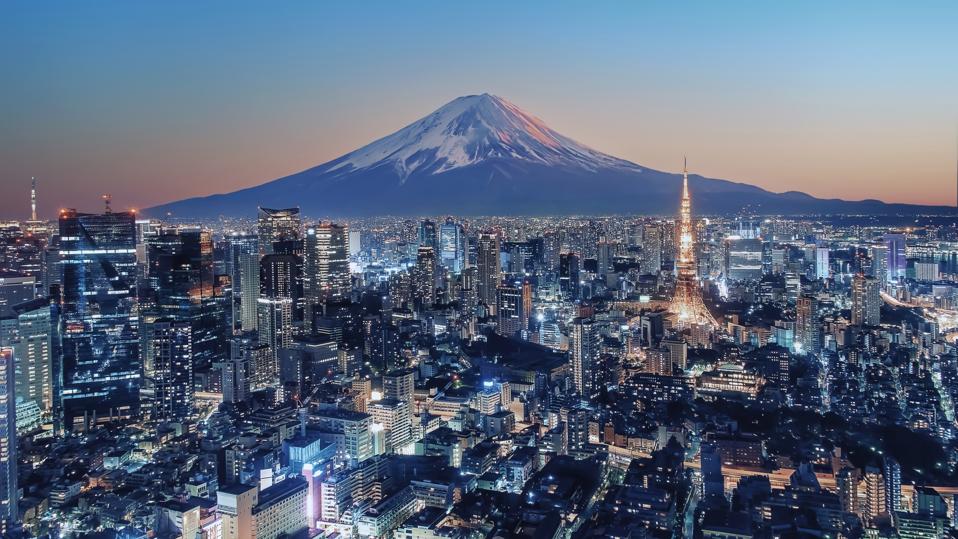I just spent a busy week in Japan for the IEEE. During this week I visited the area around Kuramoto in Kyushu Island, Japan, where Matt Frances, Director of IEEE Region 5, and I visited a silk factory and a research and development station for the Japanese Ministry of Agriculture, NARO.
I then flew to Tokyo to attend the first IEEE Young Professionals and Laurates Program and VICS and the IEEE Awards Ceremony, which included awarding the first IEEE Medal of Honor with a purse of $2M. Afterwards I went to Osaka to attend a Women in Tech Global Summit and then an IEEE Milestone event to celebrate the invention of the Funuro Electric Fish Finder and a visit to the Osaka Expo. Details below.
We visited the Atsumaru Yamaga Silk plant along with Kazuo Kyuma, President of NARO. This sericulture facility raises silk worms in a sterile environment so the worms don’t get sick and feeds them ground, dried and reconstituted mulberry leaves grown in a small forest in the hills near the plant. This allows 24 iterations of healthy silk worms per year. They call this project Silk on Valley Yamaga. This plant produces a significant percentage of the silk production in Japan.
In addition to regular silk for fabrics we were shown silk-based cosmetics and a genetically modified silk that glows in the dark when exposed to ultraviolet light. The photo below shows Kyuma-san, Toshiko Shimada, Atsumarau Holdings Inc. CEO, and me in front of the Atsumaru Silk plant. NARO is a supporter of the Atsumaru silk activities.
While near Kuramoto we visited a NARO research station where we heard about their efforts to grow sweet potatoes that are resistant to fungal rot and other diseases that have impacted sweet potato production in Japan. While there I gave a talk on IEEE and its activities in SmartAg that may be of interest in Japan, see me next to a sign about this talk below.
IEEE is creating a comprehensive SmartAg activity including many parts of the IEEE. This focuses on using technology for monitoring and improving food production as well as food safety through the entire food supply chain. This uses satellite and other monitoring, Internet of Things technology where sensors and farm equipment in fields are connected to local and wireless networks so collected data can be analyzed by AI and other technology.
In addition to food production, IEEE is developing ways to improve food safety by placing freshness sensors in packaging and using technologies such as blockchain to track contaminated food better so that only the affected food is recalled, reducing food wastage while protecting food supplies.
After our visit to Kuramoto, Matt, Kyuma-san and I travelled back to Tokyo. The next day started with the initial session of the IEEE Young Professionals and Laureate Program. This is an initiative that the IEEE board of directors approved last year to bring together young professionals, IEEE medal winners and other people and create an event to inspire young professionals and show that IEEE can be their professional home and help them flourish.
The program included talks by 2025 IEEE President, Kathleen Kramer, me, and IEEE COO, Sophia Muirhead to start the day as well as a fireside chat by Steve Wozniak.
After this initial 2.5-hour program the rest of the day featured the Vision, Innovation and Challenges Summit or VICS. The next day evening was the IEEE Honors Ceremony where 26 IEEE awards were presented, including the $2M award of the Medal of Honor to Henry Samueli. Samueli donated his prize to support the IEEE Eta Kappa Nu, HKN, honors society. The image below features some important attendees.
The day after the IEEE Honors Event Kathleen Kramer, her husband Antonio Geremia and I flew to Osaka for a couple of events and then to visit the Osaka Expo. We started by visiting the Women in Tech Global Summit where Kathleen was interviewed, see picture below. This event is connected with the ongoing Osaka Expo and featured the signing of a document by representatives of many governments and companies to promote participation by women in tech industries.
In the afternoon, Kathleen, Antonio, as well as Japan IEEE people and I went to an IEEE Technology Milestone event that celebrated the invention and commercialization of the Electric Fish Finder by Furuno Electric Company in 1949. The picture below shows Kathleen and the CEO of Furuno Electric unveiling the Fish Finder Milestone plaque. The afternoon and evening featured talks on IEEE milestones featuring people from the Kansai IEEE section and the IEEE Japan Council as well as Furuno Electric talks about the history and development of fish finders and other technology at the company over the years.
The day after the Fish Finder milestone event we attended the Osaka Expo with several Japan IEEE members and the Japanese IEEE council office. We visited the NTT, USA and Frech exhibits and walked on the big ring that surrounds the grounds of the Expo. It was an amazing event and the first World’s Fair that I have attended. I think IEEE should consider participating in some additional ways in future world expos.
I spent a busy week in Japan talking about SmartAg in Kuramoto, attending the IEEE Honors and associated events in Tokyo and then participating in an IEEE milestone and Osaka Expo events in Osaka.

